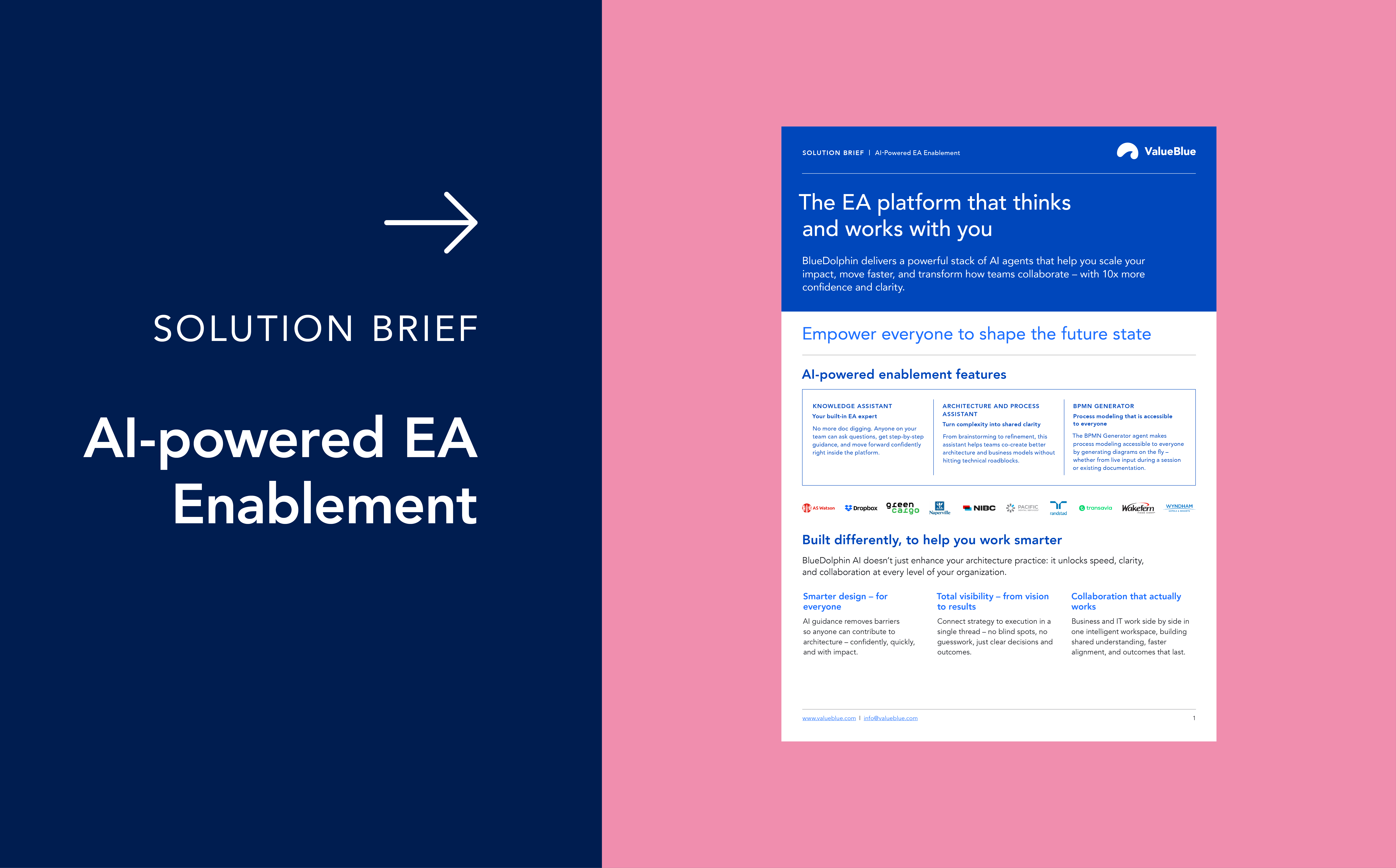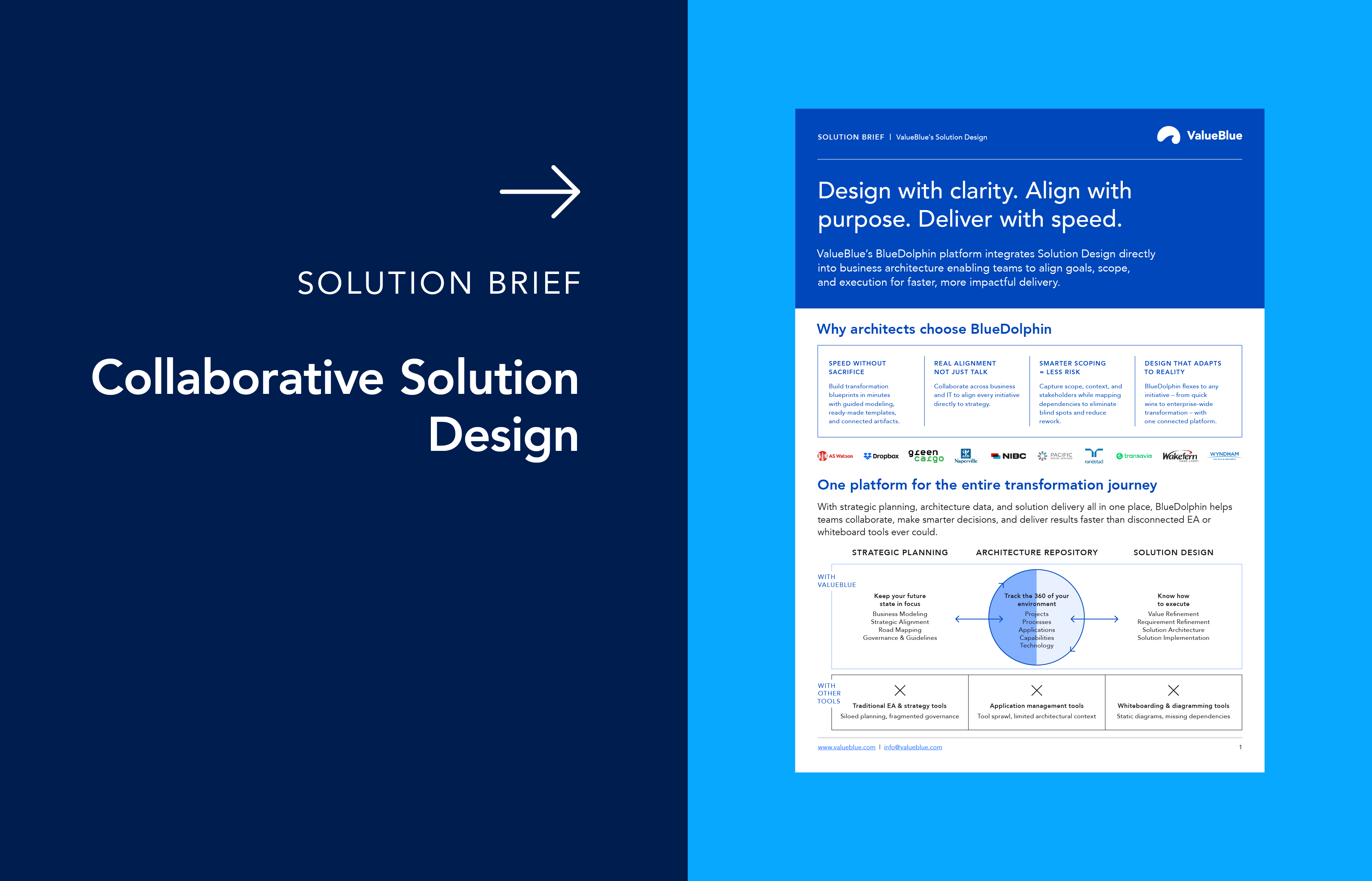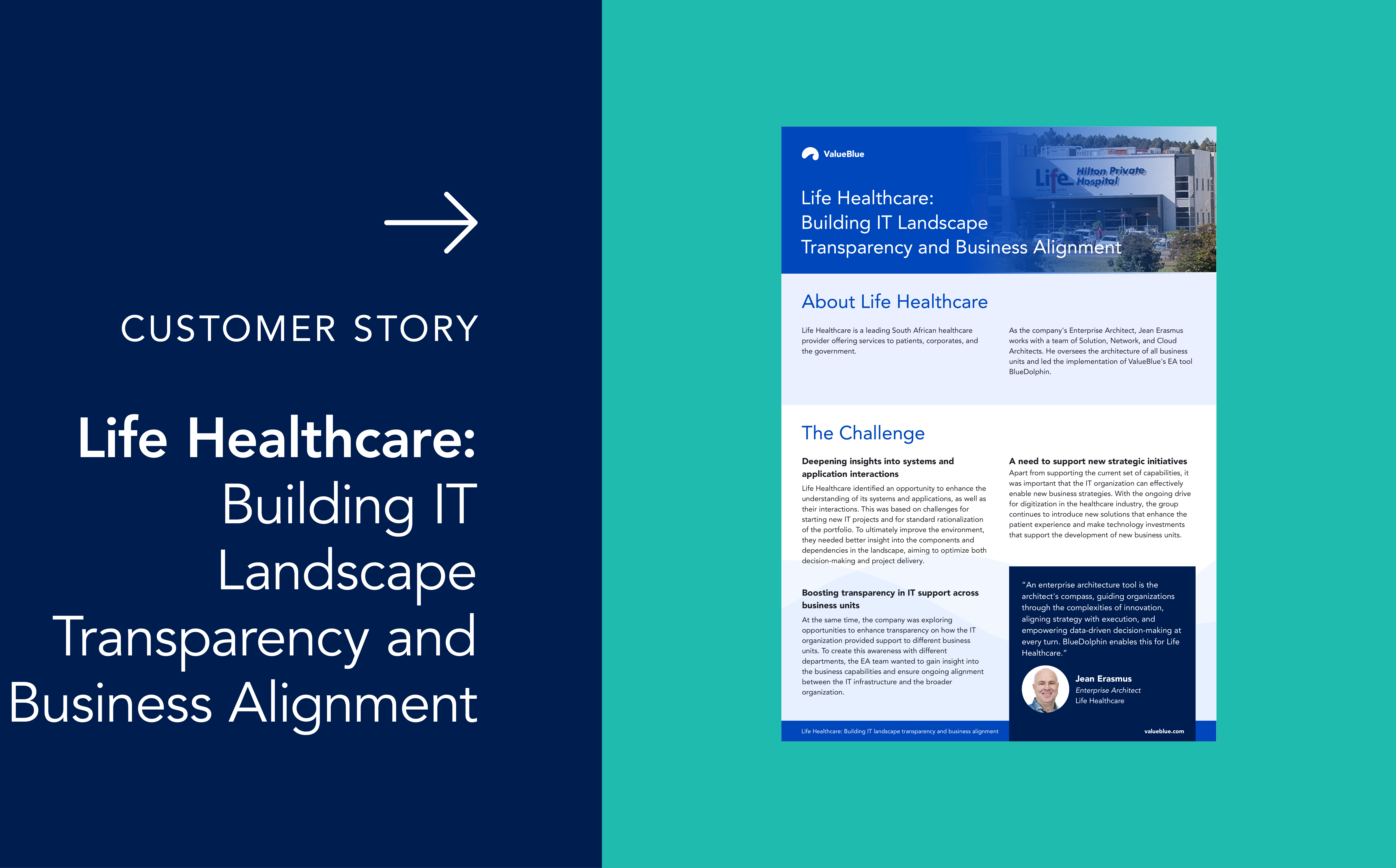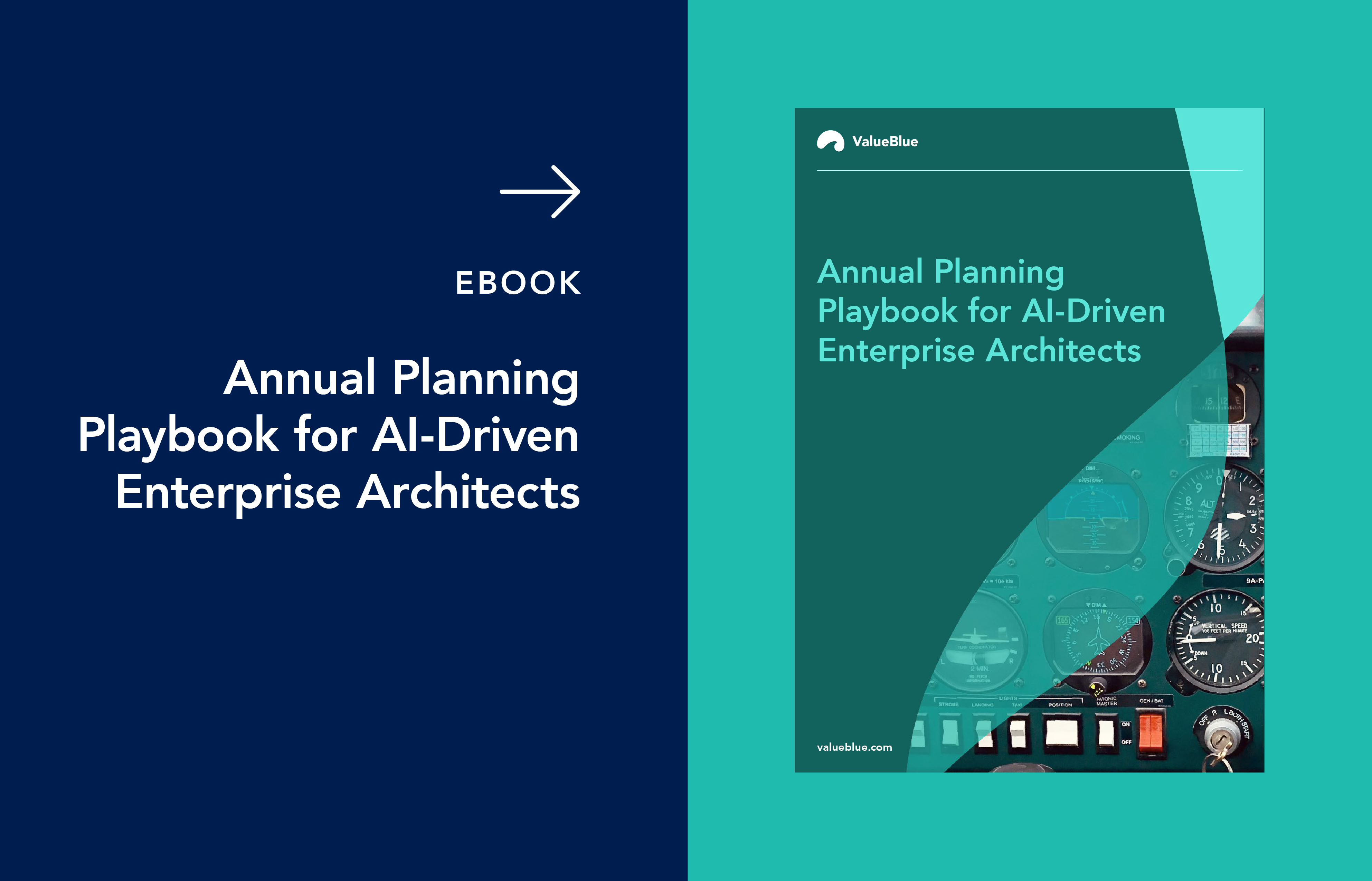How Local Governments Can Adapt to Budget Cuts with Enterprise Architecture
Picture this: you’re a local government leader, and the phone rings. It’s the finance department delivering unwelcome news – your budget has been slashed yet again. Whether it’s due to a national policy shift, an economic downturn, or new tariffs tightening funding streams, the impact is the same: you’re expected to do more with less.
For many local and state government entities across Europe and the U.S., this scenario is far from hypothetical. It’s the current reality. While instinct may prompt leaders to freeze hiring, cut services, or delay projects, these quick fixes often lead to long-term setbacks.
But what if you could respond to budget cuts not with panic, but with precision? Not with guesswork, but with a clear plan? This is where Enterprise Architecture (EA) can make all the difference.
In this article, we’ll explore how local governments can leverage EA methodology and tools to navigate budget cuts with agility and purpose. We’ll outline five practical steps, share illuminating examples, and show how EA can transform a crisis into an opportunity to build smarter, more sustainable public services.
What is Enterprise Architecture, and why should local governments care?
Local governments oversee a complex web of services that encompass public safety, social support, infrastructure, and regulatory compliance. These systems are often burdened by legacy technologies, evolving policy requirements, and the increasing demand for digital-first services.
Enterprise Architecture is a structured framework for understanding, designing, and managing an organization’s processes, systems, data, and resources. Think of it as a blueprint that reveals how your organization operates – and how it can operate better.
In the private sector, EA is widely used to align IT with business goals, streamline operations, and drive digital transformation. But in the public sector, its potential is even greater. Why? Because local governments are inherently complex ecosystems. They provide numerous services using fragmented systems, siloed departments, and outdated infrastructure. EA untangles this complexity, offering a clear view of what exists, what works, and what needs to change. When budgets are cut, the clarity provided by EA is invaluable.
Case studies: Enterprise Architecture in action
Let's take a closer look at some examples of applying EA to local government.
Streamlining procurement processes
The Dutch municipality of Veenendaal faced significant challenges in managing its procurement of SaaS applications. They lacked visibility into contract end dates, renewal timelines, and compliance with public procurement laws. This disorganization exposed them to costly lapses and inefficiencies. By adopting an EA approach, the municipality implemented a transparent and legally compliant procurement process, thereby reducing the risk of missed renewals and administrative overload.
Optimizing application portfolios
Similarly, the municipality of Ede used EA to gain control over its application portfolio. They began by inventorying applications, mapping them to business processes, and evaluating each one based on value, cost, and risk. This data-driven approach enabled them to strategically plan migrations, updates, or eliminations, thereby freeing up resources to enhance citizen services.
Both examples highlight Enterprise Architecture’s ability to eliminate operational waste, allowing budgets to stretch further without compromising service quality.
The cost of neglecting Enterprise Architecture
In 2024, the UK government introduced sweeping cuts to disability benefits, aiming to save £5 billion. However, the lack of a strategic approach led to significant consequences – 800,000 people lost access to support, and local councils struggled to assist vulnerable residents. Without a clear understanding of interdependencies between benefits, services, and data, the government couldn’t anticipate the ripple effects of these cuts.
Had EA been used, the government could have:
- Modeled the impact of policy changes on service demand.
- Identified alternative methods to assist vulnerable residents.
- Collaborated with local councils to ensure continuity of care.
5 steps to respond to budget cuts using Enterprise Architecture
Step 1: Map what you have – Build a clear view of the organization
Before making informed decisions, you need a clear understanding of your organization's goals and objectives. EA begins by mapping your organization’s capabilities, processes, systems, and data. This holistic view goes beyond IT inventories to reveal inefficiencies, bottlenecks, and outdated tools.
Step 2: Prioritize what matters – Align with strategic goals
Not all services hold equal importance. EA helps you link services to strategic outcomes, allowing you to identify areas for investment, consolidation, or cuts based on evidence rather than guesswork.
Step 3: Design for agility – Create flexible operating models
Budget cuts aren’t a one-time challenge – they’re part of a recurring cycle. EA enables you to design modular, adaptable operating models that can pivot in response to new constraints without requiring a complete overhaul.
Step 4: Leverage the right tools – Use EA platforms and automation
Modern EA platforms provide invaluable tools, including:
- Visual modeling and dashboards
- Scenario planning and impact analysis
- Integration with financial and operational data
- Collaboration and workflow management
Step 5: Engage stakeholders – Make change transparent and inclusive
Change management is critical during budget cuts. EA facilitates transparency and collaboration, bringing stakeholders – including citizens, employees, and elected officials – on board with well-communicated plans.
Resilience through clarity and collaboration
Budget cuts are undeniably challenging, but they don’t have to lead to chaos. With Enterprise Architecture, local governments can tackle financial strain with confidence and foresight. By mapping their capabilities, prioritizing strategically, designing for flexibility, leveraging advanced tools, and engaging stakeholders, they can transform crises into opportunities for smarter governance.
EA isn’t just an IT methodology – it’s a leadership tool that aligns people, processes, and technology with a shared vision. So, when the next budget challenge arises, don’t react with fear. Instead, turn to your architectural blueprint and start building a more resilient, efficient, and innovative public service. Want to take the first step? Reach out for a free consultation.





